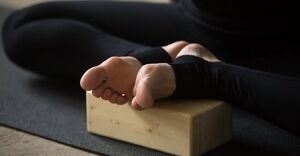
Build Strength and Endurance with These Battle Rope Circuits
Looking to diversify a workout routine and enhance strength and endurance?
Battle ropes serve as versatile and effective tools, providing a full-body workout, minimal impact on joints, and enhanced cardiovascular endurance.
This article will delve into the advantages of utilizing battle ropes for circuits, ways to integrate them into a routine, and necessary precautions.
Prepare to torch calories, boost muscular endurance, and improve mental resilience through these battle rope circuits.
What Are Battle Ropes?
Battle ropes are thick, heavy ropes that provide a dynamic and challenging workout by engaging multiple muscle groups simultaneously. They are versatile tools used for strength training, endurance building, and cardiovascular workouts.
These ropes offer a low-impact, high-intensity workout that not only helps in developing strength but also improves overall cardiovascular health. By incorporating battle rope exercises into a fitness routine, individuals can effectively target the upper body, core, and legs.
The continuous wave-like motions created with the battle ropes engage stabilizing muscles and enhance coordination and balance. The varying intensity and speed at which the ropes are used can cater to different fitness levels, making them suitable for beginners and advanced athletes alike.
Why Use Battle Ropes for Training?
Incorporating battle ropes into a training regimen can significantly improve strength, endurance, and overall fitness levels. These versatile tools provide a full-body workout that targets multiple muscle groups simultaneously, making them suitable for individuals looking for a comprehensive exercise routine.
The dynamic nature of battle rope exercises assists in building physical strength and enhancing cardiovascular endurance, contributing to a holistic fitness profile. By engaging various muscle groups with each movement, individuals may improve coordination, stability, and agility.
This form of functional training improves overall physical performance and stamina, leading to enhanced athletic capabilities and daily activities. The consistent resistance offered by battle rope exercises stimulates muscle growth, promotes strength development, and can aid in fat loss, making them a valuable inclusion in any workout routine.
1. Full Body Workout
Incorporating battle ropes into a workout routine offers a comprehensive full-body workout engaging various muscle groups, such as the arms, shoulders, back, and core. This workout can enhance strength, endurance, and overall physical fitness.
Regular use of battle ropes can aid in developing muscular strength and endurance by engaging multiple muscle groups simultaneously. The dynamic exercises with battle ropes also improve cardiovascular fitness, leading to enhanced overall performance. By adding battle ropes to workouts, individuals can enhance coordination, stability, and agility. The high-intensity workouts with battle ropes can increase calorie burn, making it a beneficial tool for achieving fitness goals.
2. Low Impact on Joints
One of the benefits of using battle ropes is that they provide a low-impact workout that is gentle on the joints. Unlike high-impact exercises, battle rope training can be a good option for individuals with joint issues or those seeking to minimize stress on their joints during exercise.
The rhythmic, wave-like motion of battle rope exercises activates multiple muscle groups without placing excessive strain on the joints. This makes it an ideal choice for individuals aiming to strengthen their muscles and cardiovascular system without risking joint discomfort or injury.
The controlled movements in battle rope workouts help enhance joint stability and mobility, contributing to improved overall joint health. By including battle rope exercises in a fitness regimen, individuals can experience a stimulating yet safe workout that promotes joint function and overall well-being.
3. Improves Cardiovascular Endurance
Incorporating battle rope exercises into a fitness routine can enhance cardiovascular endurance by increasing heart rate and promoting sustained aerobic activity. This type of cardio workout strengthens the heart and improves overall endurance levels.
Engaging in battle rope exercises challenges the cardiovascular system by working multiple muscle groups at once, leading to enhanced oxygen consumption and circulation. The intense rhythmic movements with battle ropes can quickly raise heart rate, offering a high-intensity cardio workout that improves aerobic capacity with time.
Consistently including battle rope exercises in a fitness regimen can improve cardiovascular fitness, contributing to better overall health and endurance.
4. Builds Muscular Strength and Endurance
One of the primary advantages of battle rope training is its capacity to develop both muscular strength and endurance. Through a variety of battle rope exercises, individuals can focus on different muscle groups and enhance their strength and endurance progressively.
Common battle rope exercises such as waves, slams, and circles are efficient in activating the arms, shoulders, and core muscles. Waves, which entail moving the ropes up and down in a wavelike pattern, concentrate on the shoulders and arms while involving the core for stability. Conversely, slams require forcefully bringing the ropes down to the ground, engaging the back, shoulders, and arms. These dynamic motions not only enhance muscle strength but also enhance cardiovascular endurance by sustaining continuous and intense involvement.
How to Use Battle Ropes for Circuits?
Incorporating battle ropes into circuit training can introduce a dynamic and high-intensity component to a workout routine. By incorporating various battle rope exercises in a circuit format, individuals can increase their heart rate, engage their muscles, and improve both strength and endurance.
This type of training provides a flexible approach to targeting multiple muscle groups simultaneously, making it an effective full-body workout. Some effective battle rope exercises that can be included in circuits are alternating waves, double waves, slams, and side-to-side waves. Rotating between these exercises not only maintains workout engagement but also ensures continuous activation of different muscle groups. The key to a successful battle rope circuit lies in maintaining high intensity throughout, pushing individuals to perform each exercise with power and control.
1. Warm-up with Basic Waves
Commencing the battle rope circuit with basic waves is an effective warm-up method to prepare the muscles and gradually increase the heart rate. This foundational exercise establishes the pace for the rest of the circuit, ensuring readiness for the upcoming high-intensity workout.
Performing basic waves with battle ropes involves firmly gripping the ropes and moving them in a continuous, controlled manner, engaging the core, arms, and shoulders. It is important to maintain proper posture throughout the exercise, with a straight back and slightly bent knees.
When starting the waves, focus on creating consistent and rhythmic movements, ensuring that both ropes move simultaneously. This exercise not only warms up the muscles but also enhances coordination and endurance, making it an ideal choice to begin your battle rope circuit.
2. Incorporate Side-to-Side Waves
Including lateral waves in your battle rope routine adds a side-to-side movement element that challenges various muscle groups in the body. This exercise helps improve coordination, stability, and overall workout intensity.
The lateral movement recruits the core muscles, specifically targeting the obliques and transverse abdominis. By integrating this side-to-side motion, strength is built while balance and agility are enhanced.
To execute side-to-side waves properly, maintain a shoulder-width stance with slightly bent knees and ensure stability throughout the movement. Focus on generating smooth, controlled waves instead of swinging the ropes haphazardly. This intentional approach maximizes muscle engagement and boosts the overall effectiveness of the workout.
3. Add in Slams
Including slams in a battle rope circuit can enhance the workout routine by introducing a powerful and explosive element. This exercise targets the upper body, core, and shoulders, offering cardiovascular benefits and increasing overall workout intensity.
Slams are performed by lifting the battle ropes above the head and forcefully slamming them down to the ground in a controlled manner. This movement engages muscles dynamically, requiring strength, stability, and endurance.
The rapid and forceful nature of slams elevates the heart rate, making it a valuable addition to circuit training for a comprehensive full-body workout. Maintaining proper form during slams is essential to prevent joint strain and to optimize the effectiveness of this explosive exercise.
4. Introduce Lateral Shuffle
The lateral shuffle with battle ropes challenges agility, coordination, and cardiovascular endurance. This dynamic movement engages lower body muscles, promotes lateral stability, and enhances the effectiveness of a circuit workout.
The lateral shuffle with battle ropes targets multiple muscle groups simultaneously and increases heart rate, making it a valuable cardiovascular exercise. Incorporating this movement into circuit training routines can significantly intensify workout sessions.
The quick side-to-side movements in the lateral shuffle enhance agility, coordination, balance, and stability. This exercise offers a full-body challenge and adds variety to traditional workouts.
5. Finish with Alternating Waves
Completing a battle rope circuit with alternating waves is an effective way to finish your workout, targeting the entire upper body and core muscles. This challenging exercise can help improve endurance, muscular strength, and overall workout performance.
Alternating waves are beneficial for engaging the shoulders, arms, and back muscles as you move the ropes up and down continuously. Core activation during this exercise is essential for stability and control, enhancing overall functional fitness. By adding alternating waves to the end of your circuit, you can push your muscles to their limits, increase fatigue, and promote growth. This high-intensity movement builds strength and raises your heart rate, providing a final cardiovascular challenge to finish your workout.
How Many Reps and Sets Should You Do?
The recommended number of reps and sets for battle rope exercises varies depending on factors like fitness level, goals, and workout intensity. It’s advised to start with a manageable amount of repetitions and sets and gradually increase the difficulty as you improve.
When introducing battle rope exercises into a fitness routine, it’s crucial to pay attention to your body and evaluate your current fitness level to establish the appropriate workload. Beginners may find it beneficial to begin with 2-3 sets lasting 20-30 seconds each. Intermediate individuals could consider 3-4 sets of 30-45 seconds, while advanced athletes may aim for 4-5 sets lasting 45-60 seconds. It’s important to maintain proper form and technique during each set, prioritizing quality over quantity. By progressively increasing reps and sets over time, you can effectively enhance strength and endurance.
What Are the Benefits of Battle Rope Circuits?
Engaging in battle rope circuits provides a variety of benefits, such as calorie and fat burn, improved muscular endurance, enhanced coordination, and increased mental toughness. These dynamic workouts not only push physical limits but also contribute to a comprehensive fitness routine.
Incorporating battle rope circuits into a workout routine involves activating multiple muscle groups at once, leading to efficient calorie burning and accelerated fat loss. Continuous performance of these high-intensity exercises gradually enhances muscular endurance, enabling individuals to sustain physical efforts for longer periods. The rhythmic movements in battle rope circuits improve coordination and proprioception, fostering better body awareness and control. Overcoming the mental challenges associated with these intense workouts helps develop mental resilience and fortitude, which can have a positive impact on overall well-being.
1. Burns Calories and Fat
Battle rope circuits are effective for burning calories and fat due to their intense and dynamic nature. By engaging multiple muscle groups simultaneously, these workouts elevate the heart rate, leading to increased calorie expenditure and fat loss.
Incorporating battle rope circuits into a training routine promotes calorie burning and contributes to effective weight management. The high-intensity nature of these workouts boosts the metabolic rate, enabling individuals to continue burning calories even after finishing exercising. This post-exercise calorie burn, known as excess post-exercise oxygen consumption (EPOC), aids in further fat loss. The combination of strength, cardiovascular endurance, and core stability required during battle rope workouts makes them a comprehensive way to enhance overall fitness while burning calories and shedding unwanted fat.
2. Builds Muscular Endurance
Participating in battle rope circuits is beneficial for building muscular endurance as it challenges muscles to maintain effort for extended periods. This form of continuous resistance training can enhance stamina, muscle tone, and overall endurance levels, making it a valuable component of any fitness routine.
By integrating battle rope circuits into a workout regimen, individuals can focus on improving endurance and enhancing overall physical performance. Regular engagement in these circuits can result in notable enhancements in muscle tone, aiding in the achievement of a more sculpted and defined physique.
The sustained resistance offered by battle ropes targets multiple muscle groups simultaneously, contributing to improved endurance levels and the development of a stronger cardiovascular system. This type of workout is especially effective for individuals seeking to boost stamina and surpass their physical boundaries.
The dynamic nature of battle rope exercises ensures ongoing muscle engagement, leading to increased strength and endurance over time.
3. Improves Coordination and Balance
The dynamic movements involved in battle rope circuits can enhance coordination, balance, and agility by requiring synchronized movements of the upper and lower body. Mastering the coordination of these exercises can help improve overall balance and motor skills.
This improvement in coordination and balance extends beyond the physical aspect and can also enhance cognitive function. The brain remains engaged in coordinating the movements, which can enhance neural connections.
As individuals progress in their battle rope training, they can develop a heightened sense of body awareness and control. This increased body awareness can lead to improved agility and the ability to move efficiently in various directions. Consistent practice of these exercises can result in a significant enhancement in overall body control and performance in other physical activities.
4. Enhances Mental Toughness
The mental challenges presented by battle rope circuits can help improve mental toughness and resilience. By enduring physical exertion and high-intensity workouts, individuals can cultivate mental strength, discipline, and the ability to overcome obstacles in both fitness and life.
This development of mental resilience can have significant impacts on overall well-being, as the perseverance and resilience gained from battle rope circuits can transcend the gym setting. When encountering challenges or setbacks in life, individuals who have participated in intense physical training are often better prepared to manage stress, make difficult decisions, and maintain a positive outlook.
Consistently pushing oneself in battle rope circuits promotes a growth mindset, teaching individuals to view discomfort and uncertainty as opportunities for growth and enhancement.
How to Incorporate Battle Rope Circuits into Your Workout Routine?
When incorporating battle rope circuits into a workout routine, it is important to designate specific days for circuit training and choose a variety of battle rope exercises. This approach helps target different muscle groups effectively and enhances cardiovascular endurance. Consistently including battle rope circuits in a routine allows for progress tracking and gradual intensity increases to push oneself further.
Emphasizing proper form and technique is essential to avoid injuries and maximize the benefits of each exercise. Varying the durations and rest periods between circuits can maintain workout engagement and prevent plateauing.
What Precautions Should You Take When Using Battle Ropes?
When using battle ropes, paying attention to form, starting with manageable intensity levels, and avoiding overexertion are essential. Maintaining proper technique, staying hydrated, and listening to the body are crucial precautions to prevent injuries and ensure a safe and effective workout.
It is important to gradually increase the intensity of battle rope workouts to allow the body to adapt and reduce the risk of strains or sprains. Being mindful of surroundings to avoid tripping or hitting objects during exercises is advised. Utilizing a proper anchoring system for the battle ropes is essential to prevent any accidental slippage or detachment. Remembering to warm up before starting the routine and cool down afterward to aid in muscle recovery and reduce the likelihood of post-workout soreness is also important.




No Comments